Director George Miller talks about making the first Mad Max film.

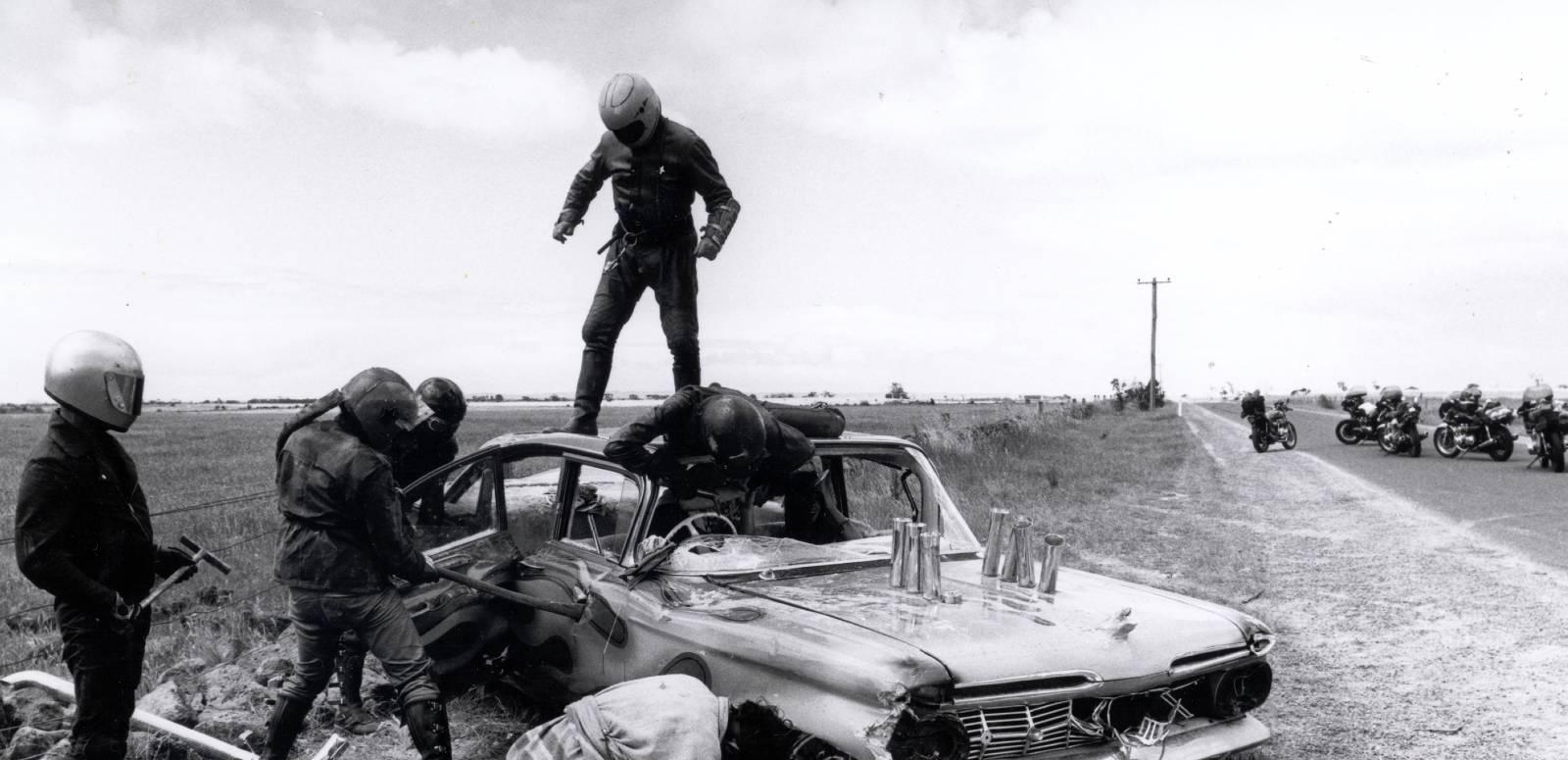
Director George Miller talks about making the first Mad Max film.
Released in 1979, Mad Max changed the face of Australian filmmaking. In stark contrast with the so-called ‘quality cinema’ of the time which dealt with historical and colonial narratives, such as My Brilliant Career (Gillian Armstrong, Australia, 1979), it is an unashamed car action revenge flick set in a futuristic, dystopian wasteland.
The film follows the story and transformation of the law enforcement officer, Max (Mel Gibson), who becomes embroiled in a feud with a notorious motorcycle gang.
Part of the film's appeal is that it combines the conventions of the action genre with a distinctly local flavour including the use of Australian vernacular, characters and landscapes. It is also a film that explores the way car culture inhabits the Australian psyche.
In celebrating 40 years since its release, the NFSA showcases an interview with director George Miller that sheds light on some of the film's key influences and also the circumstances surrounding its production and release:
George Miller interview by Paul Byrnes (excerpt) for australianscreen online in 2006
As is the case with many Australian films, landscape plays a significant role in Mad Max. It functions beyond mere background or decorative pictorialism; it is ubiquitous as a central motif. Miller speaks of the profound importance of the Australian outback in his filmmaking, in particular invoking his childhood growing up in the rural Queensland town of Chinchilla, with its 'flat roads, loam soil, heat haze and burnt land'.
Miller also talks about the intense car culture that existed within that landscape and community – with drag races and no speed limits – and the way many of his peers died on the roads.
It was these experiences and settings that provided the impetus to create the world of Max. The landscape and car culture were not simply add-ons, but rather the driving forces of the film, underpinning the whole narrative.
Miller came from an artistic background in painting and drawing. Only later, as he started to arrange images into kinetic sequences, did he become aware of the power of that crucial fourth dimension of cinema – time. In the beginning, he was more interested in form and syntax rather than narrative, and these interests certainly played a significant role in the style and aesthetic of his first feature.
'I wanted to create a silent movie with sound, a movie that could be understood without subtitles in Japan', he says. In preferencing an audiovisual form of storytelling over dialogue, Miller aimed to achieve a kind of 'pure cinema', an approach that pushed the expressive and conceptual powers of sound and image.
He cites the silent films of Buster Keaton and Harold Lloyd as key influences. In many ways, Mad Max can be seen as a car-action extension of this cinema of the silent era.
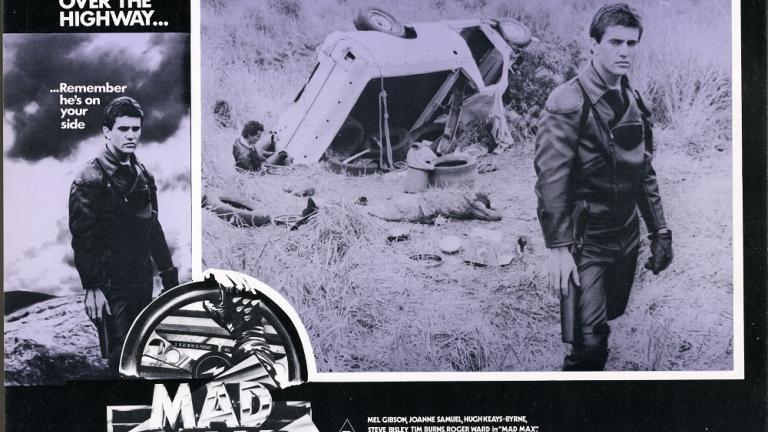
Mad Max lobby card: Max (Mel Gibson), 1979. NFSA title: 1295142
Max stands calm and resolute while behind is devastation and destruction; this is a good example of the 'unflinching stance' in cinema. It is an image that sums up the character's stoicism and was used on a number of posters for the film. Click on image to enlarge.
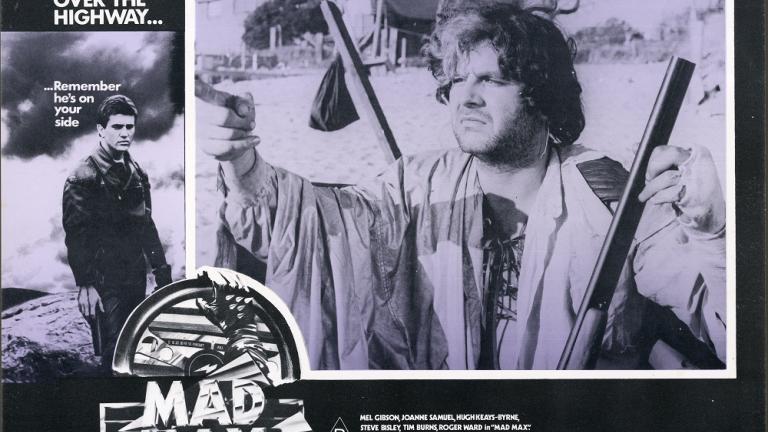
Mad Max lobby card: Toecutter (Hugh Keays-Byrne), 1979. NFSA title: 1295144
This lobby card effectively captures Hugh Keays-Byrne's characterisation of Toecutter as a villain with refined Messianic pretensions. Click on image to enlarge.
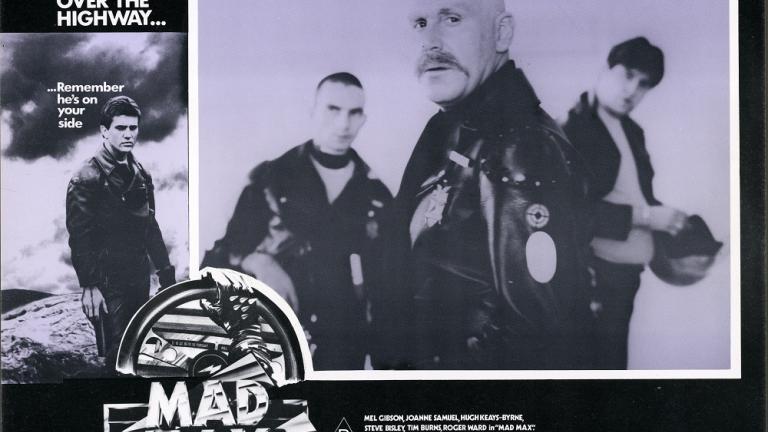
Mad Max lobby card: Fifi Macaffee (Roger Ward, centre), 1979. NFSA title: 1295162
Macaffee was chief of the MFP and Max's commanding officer. This lobby card effectively captures his 'hard man' persona. Click on image to enlarge.
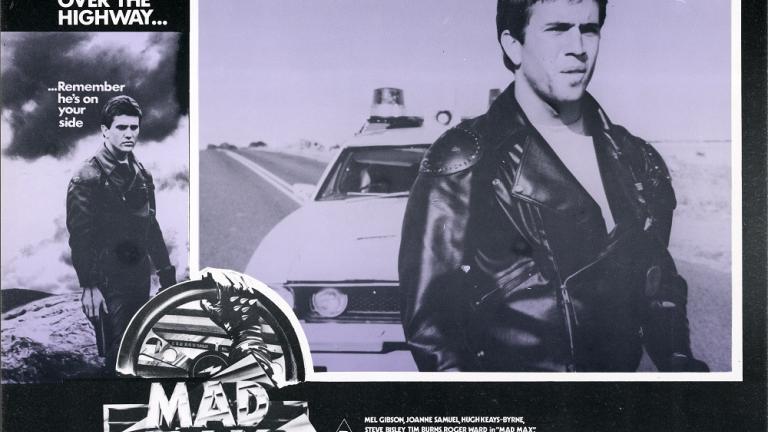
Mad Max lobby card: Max (Mel Gibson), 1979. NFSA title: 1295143
Far from iconic, Max looks uncharacteristically vulnerable in this lobby card. It adds another dimension to his tough-guy persona. Click on image to enlarge.
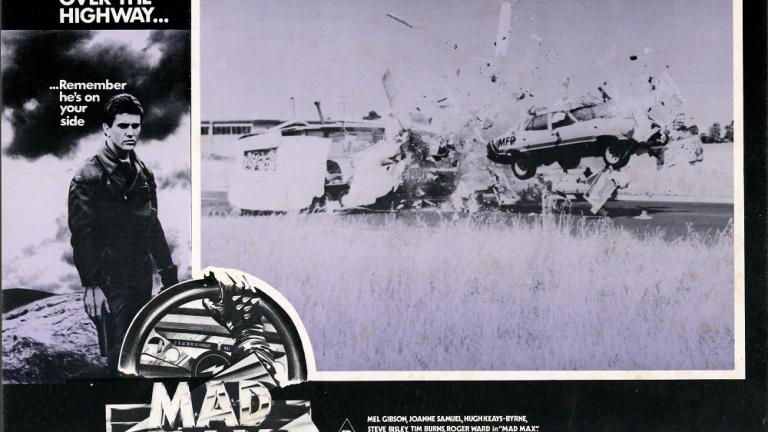
Mad Max lobby card: car and caravan stunt, 1979. NFSA title: 1295168
A fabulous image that showcases the spectacular stunts in the film. The caravan being destroyed was in fact make-up artist Vivien Mepham's studio. Click on image to enlarge.
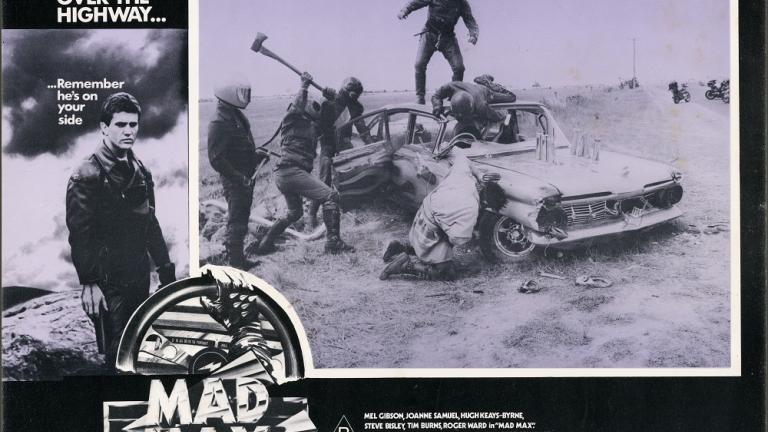
Mad Max lobby card: motorcycle gang attacks a car, 1979. NFSA title: 1295171
Brutal violence and souped-up cars were the hallmark of Max Max, which is summed up neatly in this lobby card. Click on image to enlarge.
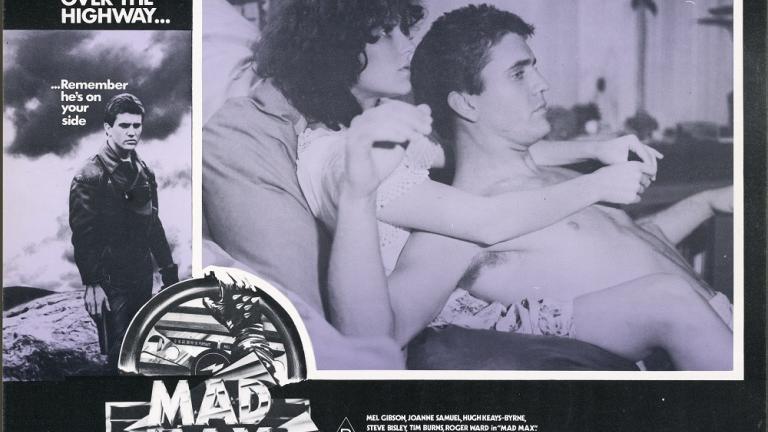
Mad Max lobby card: Jess (Joanne Samuel) and Max (Mel Gibson), 1979. NFSA title: 1295174
Tenderness is a rare commodity in Max Max. But it was the murder of Jess and their son that led Max to become 'mad'. This photo captures the emotional bond between the two characters. Click on image to enlarge.
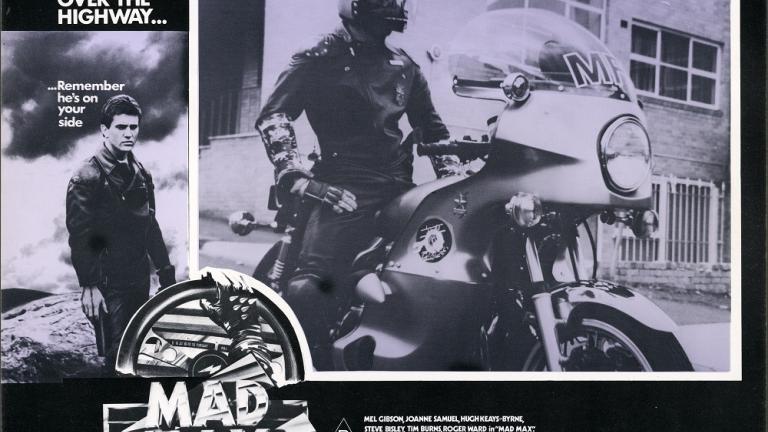
Mad Max lobby card: Goose (Steve Bisley), 1979. NFSA title: 1295192
One of the most recognisable motorcycles from the film is Goose's customised 1977 Kawasaki KZ1000. This lobby card honours the central role of motorcycles in the first Mad Max. The stylised cars and bikes became as much characters as the people in the films. Click on image to enlarge.
Also in the extended interview, Miller talks of the film's relatively small budget and how the production team saved costs by employing a 'guerrilla approach'. They drew on the help of the community, including the police force, who blocked-off roads and escorted the cast and crew to the different shoot locations. Such support would seem unlikely to happen in today's highly-regulatory setting.
The production team cut the sound and image tracks in an apartment rather than an expensive studio. And Miller and producer Byron Kennedy stayed back into the late hours of the night after shooting to sweep debris off the roads. Rather than stifling the film production, the budgetary restraints helped inspire a sense of resourcefulness and innovation that might otherwise not have been there.
Mad Max turned out to be the first in a franchise of four films (with more potentially in the future). Though Miller explains he was not entirely happy with his first feature, and that he now considers it more of a dress rehearsal for the subsequent films that developed the character and world of Max, he speaks of the experience with great fondness.
Forty years on, the film has attained enduring cult status. Its widespread and long-lasting appeal comes perhaps from the ability to look outwards, appealing to an international audience with its exploration of genre and its universal hero myth of the lone warrior wandering the landscape. But importantly, it also looks inwards, exhibiting uniquely Australian quirks, characters and settings.
The NFSA celebrates the influence and legacy of this groundbreaking film in our Mad Max curated collection. Visit the collection to see more of this interview with George Miller and other Mad Max items from our collection.
The National Film and Sound Archive of Australia acknowledges Australia’s Aboriginal and Torres Strait Islander peoples as the Traditional Custodians of the land on which we work and live and gives respect to their Elders both past and present.